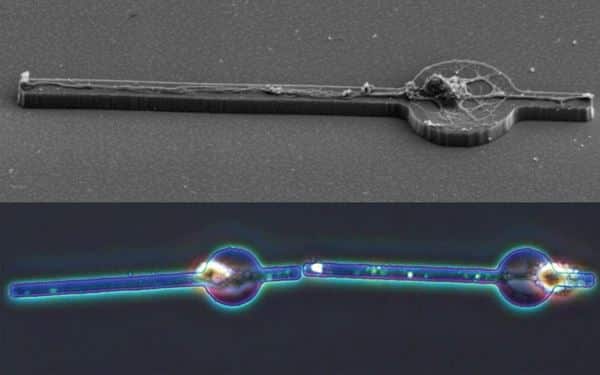Scientists Assemble Individual Neurons- Make Mini Neuron Network
The Brain, the complex biological data chip in a living organism, is basically assembled as a neural network, an association of a hundred billion cell bodies linked by elongated axons and dendrites.
Anatomical and functional analysis of the intricate neural network is very hard in vivo. In vitro models of the system function as crucial research tools because of their simplicity of community construction and the controllability of the chemical and physical surroundings.
Now, researchers at University of Tokyo have build a brain model using microscopic plates to connect neurons together one cell at a time.
“In vitro culture models are essential tools because they approximate relatively simple neuron networks and are experimentally controllable,” study first author Shotaro Yoshida explains.
“These models have been instrumental to the field for decades. The problem is that they’re very difficult to control, since the neurons tend to make random connections with each other. If we can find methods to synthesize neuron networks in a more controlled fashion, it would likely spur major advances in our understanding of the brain.”
The investigators took advantage of current insights into how neurons act; specifically, that geometric contours can help direct
learners, telling them how to develop. In cases like this, the group used a faux neuron-adhesive substance to generate a microscopic plate.The plate is round with two protruding rectangles, slightly resembling a bead onto a tight series. They discovered this contour guides neurons to develop in an extremely defined way: once put on the microplate, a neuron’s cell body settles on the group, whereas the axon and dendrites? Neurons communicate with one another? Grow lengthwise.
“What was especially important in this system was to have control over how the neurons connected,” Yoshida adds. “We designed the microplates to be movable, so that by pushing them around, we could physically move two neurons right next to each other. Once we placed them together, we could then test whether the neurons were able to transmit a signal.”
Using a technique to visualize the parts of a synapse, the team found that the microplate-riding neurons were indeed able to form these communication hubs. They also observed that these hubs were functional: when one neuron lit up with electrically charged ions, its partner lit up at precisely the same time.
“This is, to the best of our knowledge, the first time a mobile microplate has been used to morphologically influence neurons and form functional connections,” lead investigator Shoji Takeuchi concludes.
“We believe the technique will eventually allow us to design simple neuron network models with single-cell resolution. It’s an exciting prospect, as it opens many new avenues of research that aren’t possible with our current suite of experimental tools.”






























